School My Grades Get Worse Over the Year
This Is What School Was Like 100 Years Ago
Your great- (or great-great) grandparents really did have to walk five miles in the snow to get to school! Here's how American childhood education has evolved since the 19th and early 20th centuries.
 Underwood Archives/REX/Shutterstock
Underwood Archives/REX/Shutterstock
School often played second-fiddle to work
Today's child-labor laws would be unthinkable to early American families. With the exception of professional or fairly wealthy households, parents often couldn't make ends meet without children working the family farms, pitching in at family businesses, or getting jobs in mills, mines, or factories outside the home. Some of those jobs are part of the reason why the school year doesn't start in January.
ⓘ
 Courtesy Louise Basse/Reminisce
Courtesy Louise Basse/Reminisce
Some students had to travel very far to school
Louise Basse and her horse, Jane, navigated seven fields and gates to get to school in Goldendale, Washington, in the early 1900s. Check out these facts that will completely warp your perception of time.
 Everett/Shutterstock
Everett/Shutterstock
School was segregated
The turn of the century was still long before the dawn of the Civil Rights movement, and school still had a long way to go in terms of offering equal opportunities for all students. According to encyclopedia.com, in 1910, the vast majority of African American students still lived in the South, where schools were far poorer than in the North. Average school years in the South were only 121 days, and there were no attendance laws. Black teachers' salaries were dismally low, and public secondary schools for African American students were few and far between. Don't miss these "facts" about the civil rights movement that actually aren't true.
 Glasshouse Images/Shutterstock
Glasshouse Images/Shutterstock
Not all children went to school
At the turn of the century, only 51 percent of children age five to 19 even went to school. By 1910, the number had grown to a whopping 59 percent, per the National Center for Education Statistics. Numbers were approximately 20 percent lower for non-white students. And most of those students only attended school for a few years to learn basic English and math. In 1900, only 11 percent of high school-age children were enrolled in school at all. These 14 everyday objects looked pretty different 100 years ago, too.
 Courtesy Clarice Winters/Reminisce
Courtesy Clarice Winters/Reminisce
Students had specific attire that they would wear to school
In 1908, Clarice Winters' mother, Marjorie Zimmerman (back row, center), was in her last year at Bellview School in Somerset County, Pennsylvania. See the fashion trends that were popular 100 years ago.
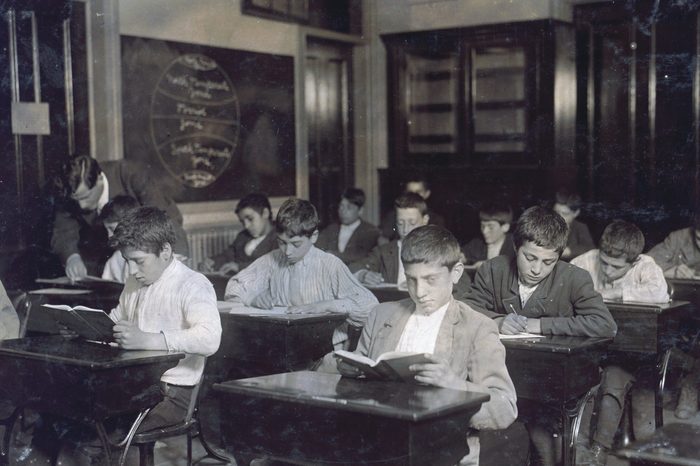 Universal History Archive/UIG/REX/Shutterstock
Universal History Archive/UIG/REX/Shutterstock
Night school wasn't just for adults
Child labor on farms and in cities was so common in the late 1800s and early 1900s that many states passed laws requiring largish cities to provide evening elementary and high-school education. One school official said at the time that parents were happy that their kids could finally get a basic education without quitting the farm work or outside jobs that they had during the day. Learn what women weren't allowed to do only 100 years ago.
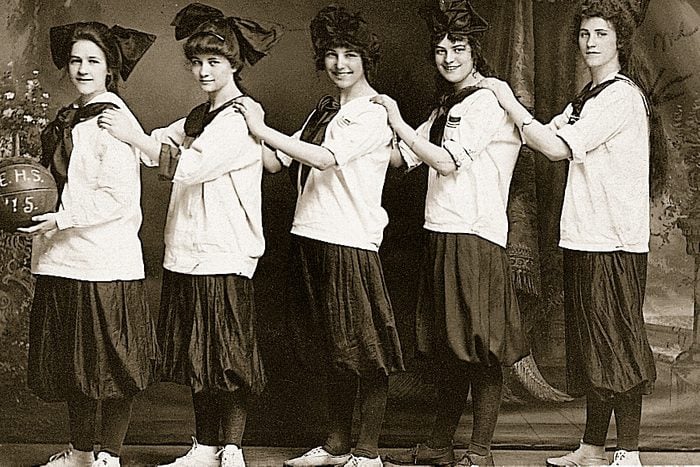 Courtesy Ruth Nuhfer/Reminisce
Courtesy Ruth Nuhfer/Reminisce
They had school sports, but the uniforms were very different
The Emlenton (Pennsylvania) High School girls' basketball team posed in 1915 in their game attire. Ruth Nuhfer says her mother, Blanche (Grieff) Barnes, is on the right. As education continues to evolve, see the things your children will be learning in school that you never did.
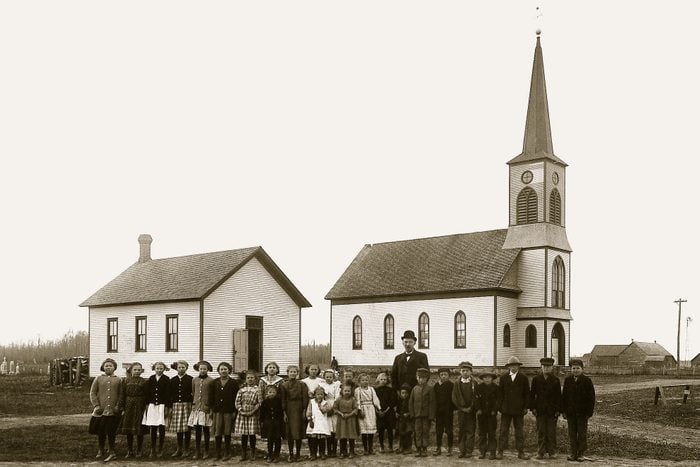 Courtesy Janet Duebner/Reminisce
Courtesy Janet Duebner/Reminisce
Many schools only had one room
Renata Nelesen and her brother Harold attended this one-room parochial school near Marshfield, Wisconsin, and their father was the teacher, says Renata's daughter, Janet Duebner of Sturgeon Bay, Wisconsin. He was also pastor of the church and posed with his students for this photo in 1913. Being in one room definitely wouldn't fly today especially during the pandemic. Check out what you may not see in schools anymore after coronavirus.
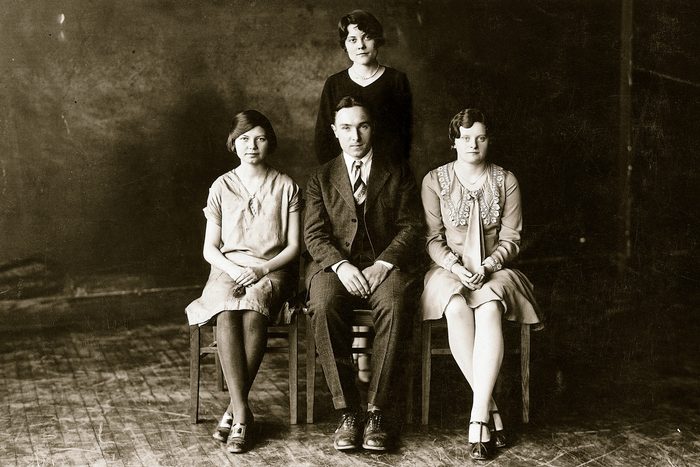 Courtesy Virla Jean Lynk/Reminisce
Courtesy Virla Jean Lynk/Reminisce
There was still debate team
Virla Jean (seated at left) was proud of her accomplishments as part of the Farmington (Michigan) High School debate team in 1929. What an extracurricular can do for students is just one of the 33 things your child's teacher wants you to know.
 Peter Carroll/imageBROKER/REX/Shutterstock
Peter Carroll/imageBROKER/REX/Shutterstock
Punishment was hands-on
Misbehaving students in the 1800s and 1900s could get detention or be suspended or expelled from school. But they were also regularly spanked, paddled, lashed, or had palms or knuckles rapped with a ruler. Although corporal punishment in schools is outlawed in most of the United States today, it's legal in 19 mostly southern states including Louisiana, Georgia, and Arkansas.
Even preschoolers in these regions can be subject to spanking and swatting in some areas: A national report from the 2015 to '16 school year shows that about 1,500 young children received physical punishment in preschool or pre-K, mostly at schools in Texas and Oklahoma. Good thing nursing hasn't changed all that much. See what nursing looked like 100 years ago.
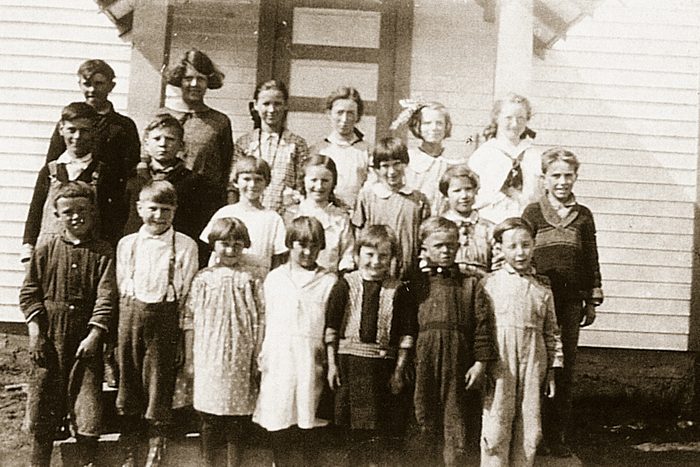 Courtesy Magdalene Becker/Reminisce
Courtesy Magdalene Becker/Reminisce
Class sizes were around 20
Magdalene Becker started teaching in 1927 near Murray, Wisconsin. Her first class had 21 students.
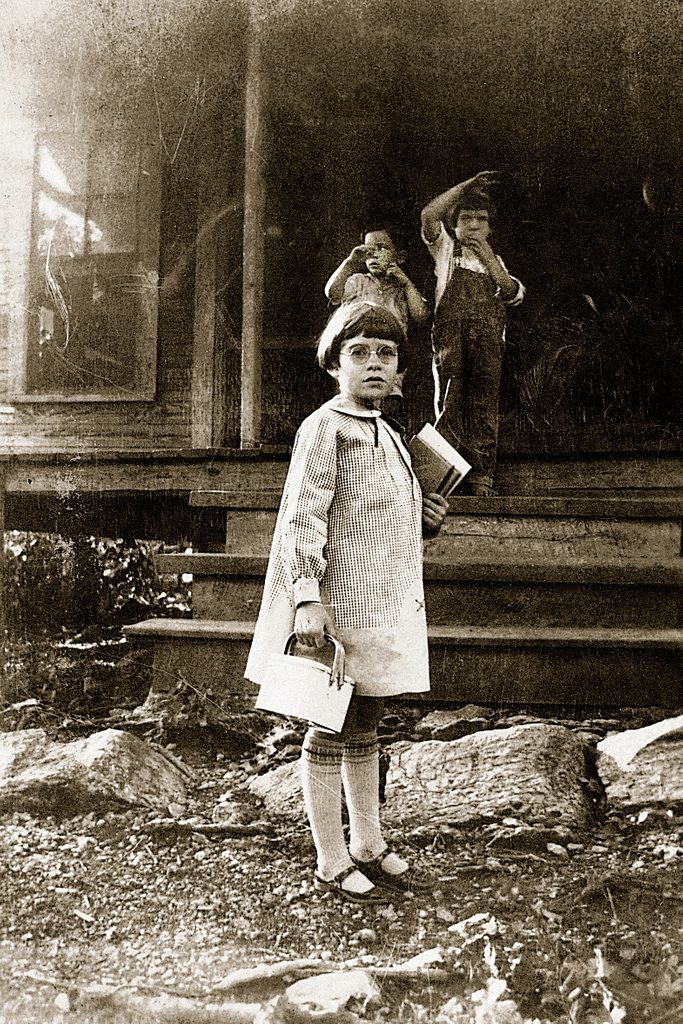 Courtesy Martha Dudley/Reminisce
Courtesy Martha Dudley/Reminisce
Many students were eager to start learning
Martha Dudley was eager to start school in 1926. That's her little brother O.R. and sister Lillie Ruth waving in the background.
 Courtesy Alice Marks/Reminisce
Courtesy Alice Marks/Reminisce
Kids just starting school were afraid to leave their parents
Alice Marks looks more relaxed in this October 1928 photo than she felt for the first two weeks of school, which was her first time being separated from Mom and Dad. Make sure your child is as ready as they can be with these school essentials most people forget to buy.
 Underwood Archives/UIG/REX/Shutterstock
Underwood Archives/UIG/REX/Shutterstock
Some children really did walk 5 miles to school
In the 19th and early 20th centuries, there was no public or school transportation across most of the United States. In rural areas, schools were meant to serve children who lived within a four- or five-mile radius—what was considered "walking distance" back then. Some kids walked, while others rode horses or drove buggies to school.
 Courtesy Mary Ann Kunselman/Reminisce
Courtesy Mary Ann Kunselman/Reminisce
Some bus rides were long
Mary Ann Kunselman (center), twin sister Martha, and brother Shelton had the longest ride on this bus in the 1920s because they got off at the last stop. Don't miss the 12 secrets your school bus driver won't tell you.
 Courtesy Evelyn Cochran/Reminisce
Courtesy Evelyn Cochran/Reminisce
Schools were much smaller
Evelyn Cochran attended this school in Passport, Illinois, from 1915 to 1923.
 Courtesy Elizabeth Norton/Reminisce
Courtesy Elizabeth Norton/Reminisce
Buses used to be drawn by horses
"The horse-drawn bus was painted yellow with a door in the back. Grandpa parked it next to the barn, where kids would play in it," recalls Elizabeth Norton. "That's my sister Alta and brother Charles in the wagon in 1923." Learn more about how horses also pulled mail carriers and what else mail delivery looked like 100 years ago.
 Courtesy Belle Brown/Reminisce
Courtesy Belle Brown/Reminisce
Some students had their mother as their teacher
Belle Brown was Belle Barnes when she attended Edgewood School. That's her in the lower right corner in 1924. Her mother was the teacher.
 Underwood Archives/UIG/REX/Shutterstock
Underwood Archives/UIG/REX/Shutterstock
The school year was a lot shorter
Today the school year stretches from late-August or September through mid-June—about nine months. In the late 1800s, kids in rural areas were in school for only five, because parents needed children to help with harvest and planting seasons. The school year got longer in the early 1900s as educating children became required by law and more public schools were built. But farm kids were often absent in spring and fall.
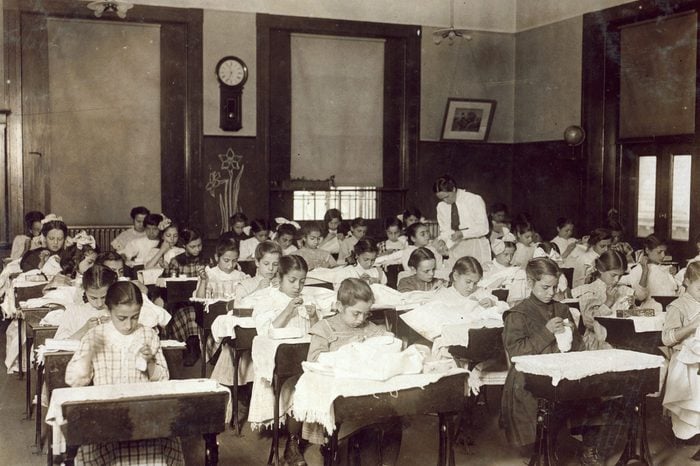 Universal History Archive/UIG/REX/Shutterstock
Universal History Archive/UIG/REX/Shutterstock
Girls learned domestic skills like sewing
Women's charities and other women-led groups pushed to include basic domestic skills like sewing and mending in girls' education. These were marketable skills and helped less affluent girls get domestic service jobs like housekeeping and laundering. The women who pressed for domestic education in schools also believed the skills would also improve the home lives of the girls, some of whom were impoverished and would come to school in torn old clothes. Learn what proper hygiene looked like 100 years ago. Hint: it's not so different.
 Underwood Archives/UIG/REX/Shutterstock
Underwood Archives/UIG/REX/Shutterstock
"Open-air school" was a thing
In the early 20th century, outdoor and "open-air" schools became a popular trend for children with lung disease or other health problems. The school buildings were often a tent with open sides, or just classrooms with huge windows that were left wide open, even in winter. It was thought that the sunshine and fresh air would help the kids breathe easier and give them more energy. Find out the things your school principal won't tell you—but you'll definitely want to know.
 Courtesy Max Philpott/Reminisce
Courtesy Max Philpott/Reminisce
Discipline was enforced
Max Philpot (front row, on left) and his buddy wondered who'd feel the discipline stick first. He did after he was caught fighting. This picture of their 1850s log school, later covered in siding, was taken in 1922.
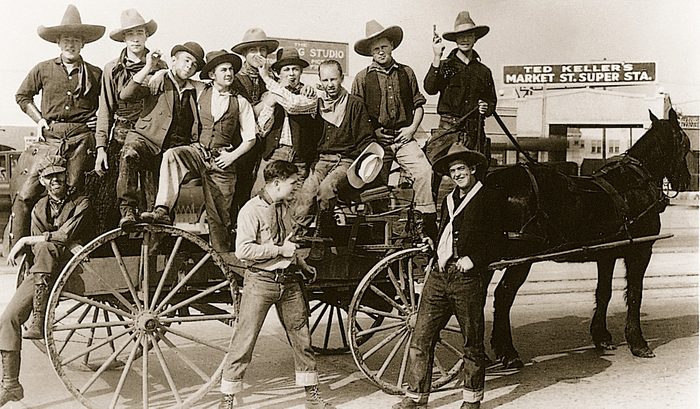 Courtesy Willard Bailey/Reminisce
Courtesy Willard Bailey/Reminisce
Students skipped school sometimes
Willard Bailey and his friends at Inglewood High School in 1926 had a "senior skip" day with a Western flavor, as they dressed up like cowboys and rode a wagon around town. Willard is at top right.
 Courtesy Edmund Wright/Reminisce
Courtesy Edmund Wright/Reminisce
Some classrooms could fit in their teacher's car
This could have been the 1923 class photo for the Lucas School, a few miles south of Satanta, Kansas. It shows all the students, including Edmund Wright (left), in their teacher's car. Don't miss these heartwarming ways teachers have gone above and beyond for their students.
 Courtesy Ken Cole/Reminisce
Courtesy Ken Cole/Reminisce
Students were taught how to properly hold and use scissors
Using scissors is obviously what these children were waiting for in this 1922 photograph at the Presumpscot School in Portland, Maine. Ken Cole is in the last row, on the right. Check out what technology has looked like in schools over the years and how much it has developed.
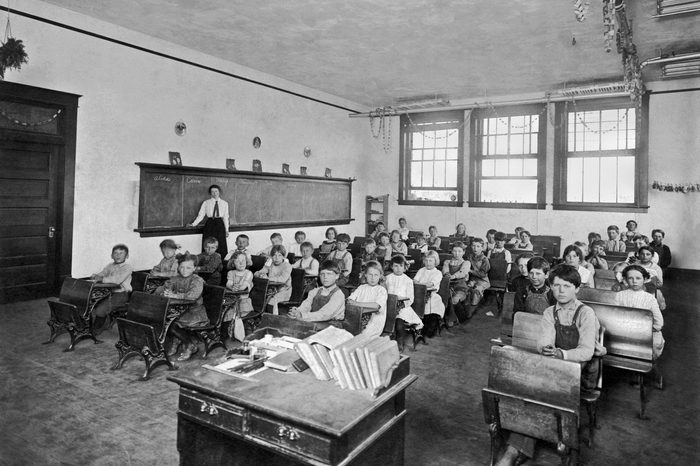 Underwood Archives/UIG/REX/Shutterstock
Underwood Archives/UIG/REX/Shutterstock
Grades 1 to 8 learned together in a one-room schoolhouse
Most American kids in the 1800s and early 1900s went to one-teacher, one-room schoolhouses for first through eighth grade. Depending on the population of the nearby area, there could be anywhere from a handful of students to more than 40. The youngest kids sat in the front and the oldest in the back, with the teacher on a raised platform at the front of the class.
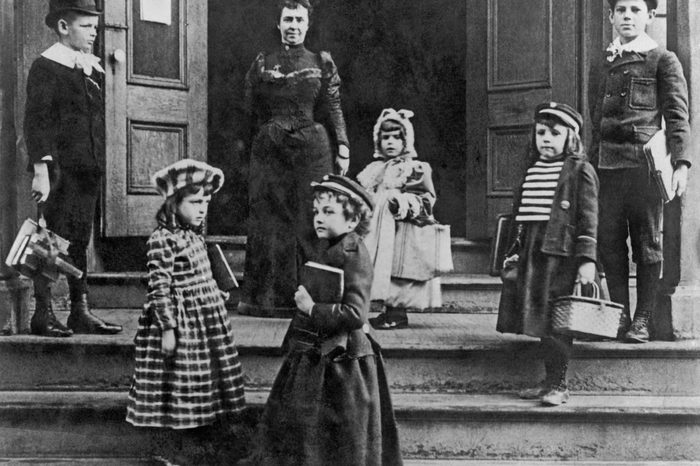 Underwood Archives/UIG/REX/Shutterstock
Underwood Archives/UIG/REX/Shutterstock
Lunch pails were actual metal pails
The only school supplies children had in the early 1900s were chalk and tiny chalkboards called slates, and sometimes textbooks, according to a report from the Library of Congress. They used slates like notepaper and worksheets are used in elementary level classrooms today—to work math problems, practice writing, and spelling, and just about everything else. As for lunchtime, children often carried their lunch to school in a metal pail (hence the term "lunch pail") or woven baskets. Learn which popular foods people hated eating 100 years ago. You definitely wouldn't see any of those in a students lunch pail!
 Courtesy Viola Stoddard/Reminisce
Courtesy Viola Stoddard/Reminisce
School plays were always a hit
The art and drama department of Howell (Michigan) High School put on a production of The Wishing Well for two nights to a packed house in March 1928. Viola Stoddard (back row, sixth from right) was in the chorus.
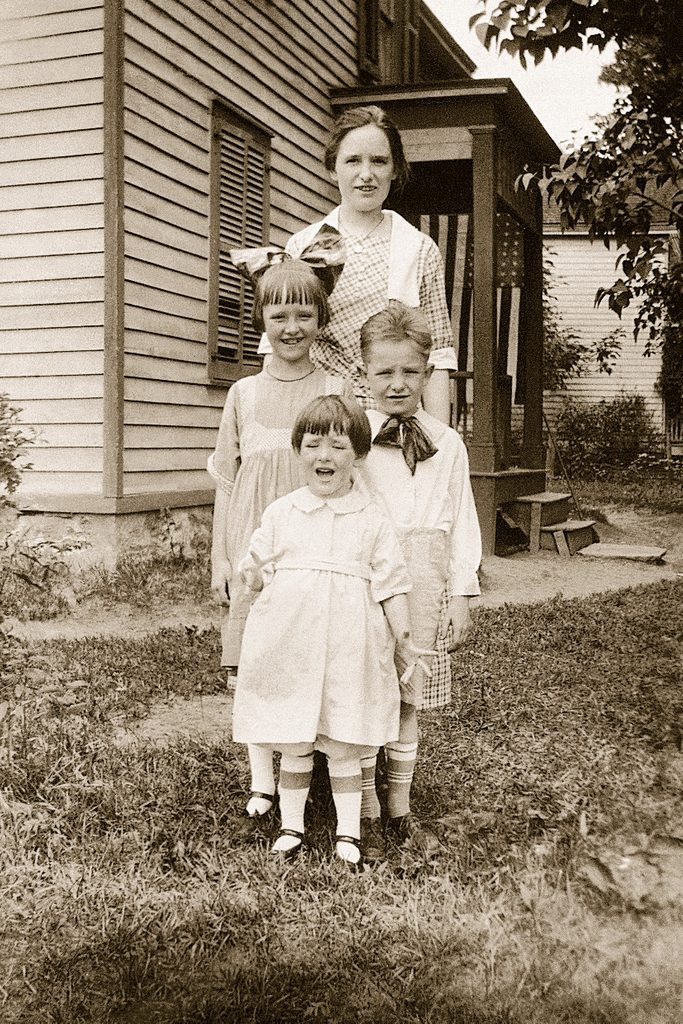 Courtesy Marjorie Leborgne/Reminisce
Courtesy Marjorie Leborgne/Reminisce
Kindergarten wasn't available in every town
"It was the first day of school in 1920 for me (in the hair ribbon) and my brother, Raymond," says Marjorie Leborgne. "Raymond was 5 and going into first grade because there was no kindergarten in Kingston, New York, where we lived. I was 7 and starting third grade. Our sister Alma was 3 and too young for school. She stayed home with our mother, who is behind us." See just how family time was different 100 years ago with these vintage photos.
 Courtesy Ione Pinsker/Reminisce
Courtesy Ione Pinsker/Reminisce
They had limited instruments for music class
"In 1926, I was a 12-year-old musician with the junior orchestra at Mark Twain School in Webster Groves, Missouri," says Ione Pinsker (second row, right of the triangle). "By the time they got to me, the only instrument remaining was the viola, which I disliked, but I had promised to finish the semester on any available instrument. My real education was learning to appreciate music." Don't miss these powerful reasons why teachers love their jobs.
 Courtesy James Burdette Smith/Reminisce
Courtesy James Burdette Smith/Reminisce
Students put on pageants
Back in 1922, eight second-graders put on this Washington's birthday pageant at McAlister School in Lawrence, Kansas. That's James Burdette Smith at far left in the back row.
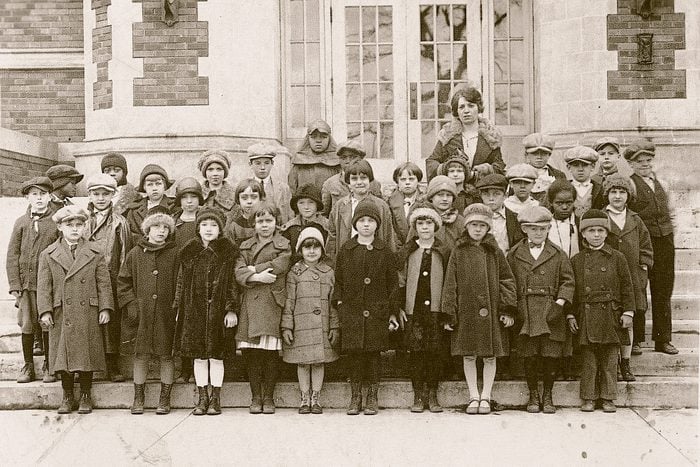 Courtesy Mary Smith/Reminisce
Courtesy Mary Smith/Reminisce
A lot of students loved their teachers
"This 1924 picture is of my first-grade class at Warren School in Decatur, Illinois," says Mary Smith. "I'm second from the left in the first row, and my brother, Paul, is second from the left in the second row. The teacher was Miss Pearson, whom I dearly loved. Check out these inspirational teacher quotes that will make you love them even more.
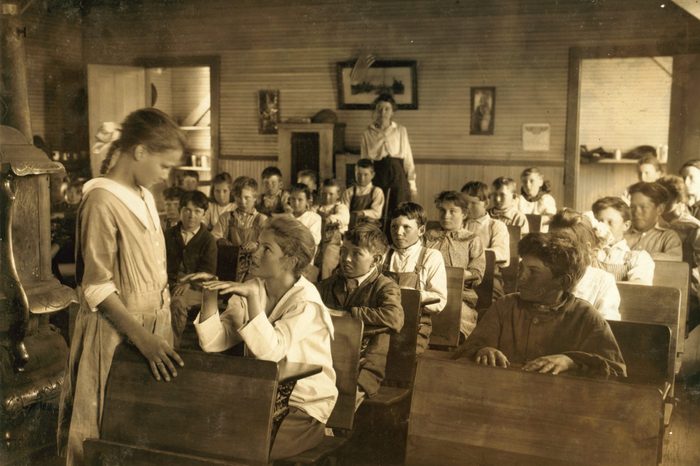 Universal History Archive/UIG/REX/Shutterstock
Universal History Archive/UIG/REX/Shutterstock
Teeth and fingernails were inspected for dirt
In the late 1800s, immigrant families from Poland, Germany, Italy, Russia, and other countries were vigorously educated in the American cleanliness culture, Suellen Hoy wrote in Chasing Dirt: The American Pursuit of Cleanliness. Children's fingernails, hair, faces, and teeth were inspected for dirt and they were taught how to "properly" wash up with soap and use toothpicks to scrape the dirt from under their nails. Teachers at overcrowded urban schools also worried about contagious disease and often "quarantined" kids with sniffles and other symptoms. Next, see what women's workplaces looked like 100 years ago to see just how far we have come.
Sources:
- Encyclopedia.com: "The 1910s Education: Topics In The News"
- National Center for Education Statistics: "120 Years of American Education: A Statistical Portrait"
- Vanderbilt University: "Evening Schools and Child Labor in the United States, 1870-1910"
- Mental Floss: "11 Ways School Was Different in the 1800s"
- NCBI: "Corporal Punishment in U.S. Public Schools: Prevalence, Disparities in Use, and Status in State and Federal Policy"
- Quartz: "19 US states allow corporal punishment in preschools"
- Daily Press: "SCHOOL DAYS WERE HARDER ON CHILDREN OF LATE 1800S"
- Butler University Libraries: "A Brief History of the Teaching of Home Economics in the Public Schools of the United States"
- Slate: "When Students Went to School Outside—Even in Winter"
- America's Library: "One-Room Schoolhouse"
- Chasing Dirt: The American Pursuit of Cleanliness, Suellen Hoy
Originally Published: January 13, 2021
Sign up for articles sent right to your inbox
Enjoy the best stories, advice & jokes delivered right to your inbox!

Subscribe & SAVE Save Up To 84%!
School My Grades Get Worse Over the Year
Source: https://www.rd.com/list/what-school-was-like-100-years-ago/
0 Response to "School My Grades Get Worse Over the Year"
Post a Comment